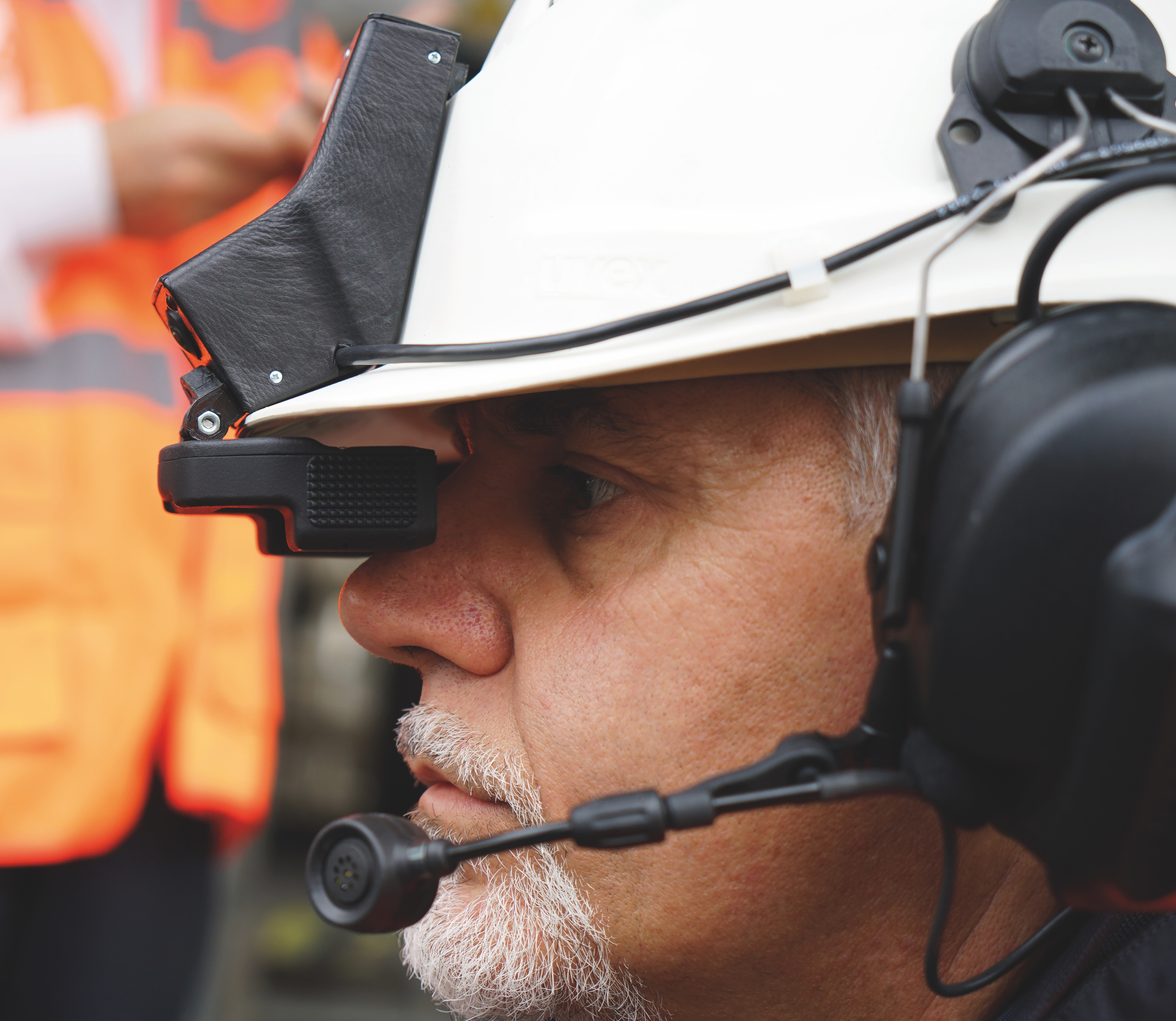
Mike has been working on construction sites for over fifteen years. As a worker, he has seen a complete transformation in how his work is organised and performed. In recent years, the advent of new technology has promoted important results, in terms of efficiency and productivity, for Mike and his construction site colleagues. Above all, however, it has brought about much higher security standards for everyone working on complex infrastructure in energy and petrochemical plants.
The first innovations, introduced to increase the reliability of structures and increase work safety, were radio frequencies and GPS. Tools for the localisation and real-time monitoring of construction site workers paved the way for increasingly sophisticated technology: tools that are now called with dozens of different names, including drones, robots and BIM (Building Information Modelling).
As explained by analysts from the Boston Consulting Group on our EVOLVE Magazine, some players are already beginning to implement advanced construction site monitoring, employing indoor GPS technology to identify danger zones and activate safety alarms. Others are using virtual reality training sessions for security procedures and monitoring vital functions via wearables to prevent and/or manage dangerous situations.
Indeed, virtual reality (VR) makes it easy to represent, consult and interpret the enormous amount of data gathered daily by sensors in a myriad field. Moreover, one of the “killer technologies” that will significantly impact work procedures in the future, together with virtual reality (an immersive environment completely different to that which surrounds us that can be experienced through the use of visors, such as the Oculus, which isolates us completely and immerses us in an imaginary, graphic world), is augmented reality.
This tool is also extremely useful in a variety of fields but should not be confused with virtual reality. Augmented Reality (AR) powers devices that enrich and integrate the information available about our environment. Computers employ sensors and algorithms to determine the position and orientation of a camera, so that AR can create and precisely superimpose virtual 3D objects on the real world around us.
Smart Helmets for Augmented Reality
Today, as a practical construction site safety application, Mike will wear a smart helmet, an intelligent (wireless and ergonomic) helmet that will help him at the site and connect him with his colleagues. “Technicians,” explains Mike, “are directly connected to specialists at our Milan Headquarters. The smart helmets, which can be worn at any construction site around the world, allow the specialists to view exactly what we are seeing at the site and provide us with real-time instructions via audio or on the helmet’s special visor.”
The comfortable intelligent helmet adapts to the safety helmet that all workers must wear, integrating it with a microphone, orientable camera and visor, sound cancelling headphones, wireless connectivity and independent batteries. This is a last-generation technological set-up that helps workers perform optimally in complex contexts. “It enables true bi-directional work procedures,” explains Mike, “allowing the operator not only to remotely communicate with colleagues, but also to show them exactly what he is looking at.” The precision of the indications provided by the remote party is destined to increase and the on-site operator can receive various types of information in real-time, including documents and codes from remote desktops.
BIM System, Drones and Wearable Sensors
It is extremely useful for Mike and his colleagues – who are on-site and far from any computer - to be able to view BIM System information at any moment. Building Information Modelling (a digital process that allows every individual component of a project to be monitored) is an approach to design and contracting activities that allows 4D models to be integrated with scheduling.
While the ongoing adoption of increasingly sophisticated technological devices promotes the consolidation of safety trends – an especially important aspect for enterprises operating on major infrastructural works – the smart helmet is not the only technological innovation present on the construction sites. Drones are on the frontline, too. In fact, they have proven extremely useful for supervising and monitoring all work phases, reducing risks and increasing worker safety.
Moreover, drones not only supply construction site directors with real-time information on the works, which is essential to identify faults and inefficiencies that could lead to accidents, but they also provide technicians like Mike with a different point of view. Mike’s ability to accurately examine materials and structures, such as pillars, means that the presence of workers in particularly dangerous points can be avoided. In short, drones serve as human substitutes in a wide range of risky contexts, including heights or in dangerous areas, in general.
Other technological solutions designed for worker safety include vests with inflatable collars that protect the neck and head in case of significant falls and helmets with a special beam that allows site directors to supervise the positions of all workers, as well as sounding an alarm if a worker appears to be unconscious or if a tunnel needs to be rapidly evacuated due to a gas leak.
Last but not least, a wide range of sensors can be inserted in work clothes to monitor worker respiration, body temperature and cardiac frequency, as well as signalling lack of movement that could mean a worker is unconscious. Other sensors can be installed directly at the construction site to analyse environmental conditions and monitor key parameters such as dust levels, temperature, noise and other elements that may pose a risk to workers.